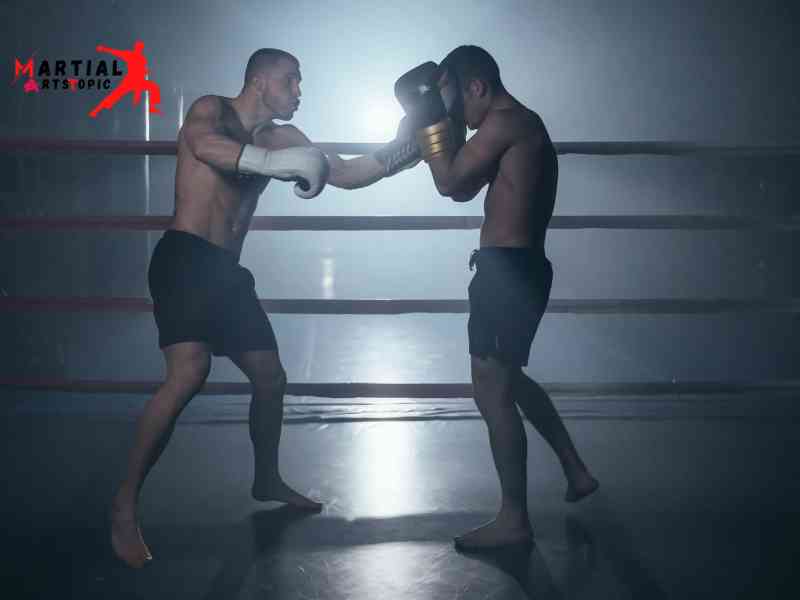
The History and Origins of MMA Martial Arts
The History and Origins of MMA Martial Arts MMA, or Mixed Martial Arts, has become increasingly popular in recent years, captivating audiences with its intense and dynamic fighting style. But where did this combat sport originate? In this blog post, we will delve into the rich history and origins of MMA martial arts.
MMA martial arts can trace its roots back to the early 20th century, when various forms of hybrid fighting styles emerged. However, it wasn’t until the 1990s that MMA, as we know it today, gained mainstream attention.
One of the key figures in the development of MMA was Brazilian Jiu-Jitsu master, Helio Gracie. Gracie and his family revolutionized the sport by combining various martial arts disciplines, such as judo, wrestling, and boxing, with their own expertise in jiu-jitsu. This unique blend of styles became known as Brazilian Jiu-Jitsu, which formed the foundation of modern MMA.
The first official MMA event, known as UFC 1 (Ultimate Fighting Championship), took place in 1993 in the United States. The tournament pitted fighters from different martial arts backgrounds against each other, with no weight classes or rules, to determine the most effective fighting style.
This groundbreaking event captured the attention of sports enthusiasts around the world, sparking a new era of combat sports. MMA quickly gained popularity because of its raw and unpredictable nature, attracting a diverse range of athletes from various disciplines.
Over the years, MMA has evolved into a highly regulated and organized sport. Well-defined rules have ensured the safety of the fighters, adding an element of strategy and technique to the bouts. They introduced weight classes, allowing fighters to compete against opponents of similar size and skill level.
Today, MMA has become a global phenomenon, with organizations like the UFC, Bellator MMA, and ONE Championship hosting high-profile events that draw millions of viewers. The sport has also produced legendary fighters who have become household names, such as Conor McGregor, Anderson Silva, and Ronda Rousey.
MMA has had a significant impact on the world of martial arts, forcing traditional styles to adapt and incorporate elements of MMA into their training. This cross-pollination of techniques has resulted in a new generation of well-rounded fighters who are proficient in striking, grappling, and submissions.
The Physical and Mental Benefits of Practicing MMA Martial Arts
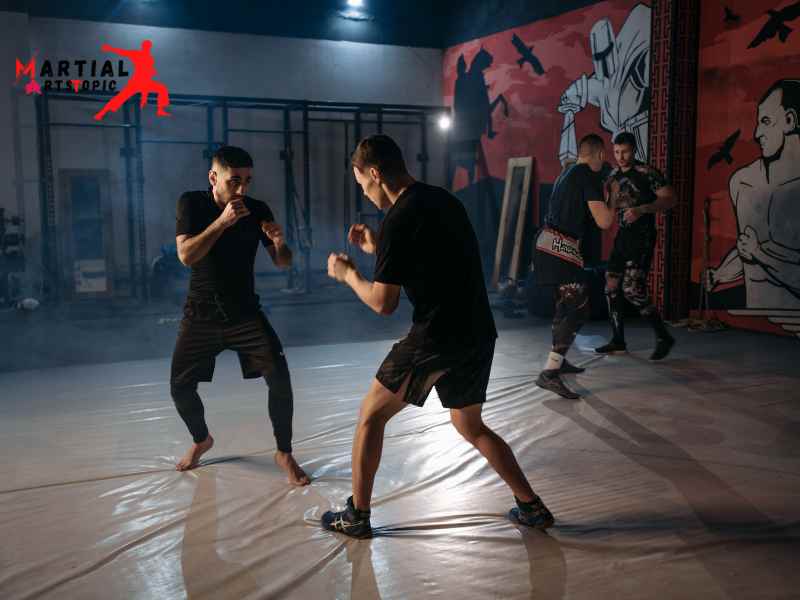
The Physical and Mental Benefits of Practicing MMA Martial Arts MMA Martial Arts, also known as Mixed Martial Arts, is a combat sport that combines various fighting techniques from different disciplines such as boxing, Brazilian Jiu-Jitsu, Muay Thai, wrestling, and more. It has gained immense popularity in recent years, not only as a competitive sport but also as exercise and self-defense. In this blog post, we will explore the physical and mental benefits of practicing MMA Martial Arts.
Physical Benefits of MMA Martial Arts
- Full-body workout: MMA Martial Arts training involves a wide range of movements, including striking, grappling, and ground fighting. This comprehensive workout engages every muscle group in your body, providing an excellent cardiovascular workout and improving strength, flexibility, and endurance.
- Weight loss and muscle toning: Regular practice of MMA Martial Arts can help you shed those extra pounds and tone your muscles. The intense training sessions burn calories and increase your metabolic rate, leading to weight loss. The resistance training involved in MMA Martial Arts helps in building lean muscle mass, giving you a more sculpted physique.
- Improved cardiovascular health: MMA Martial Arts training requires high levels of stamina and endurance. The intense and fast-paced nature of the sport pushes your cardiovascular system to its limits, improving your heart and lung function. This leads to better overall cardiovascular health and increased aerobic capacity.
- Increased agility and coordination: MMA Martial Arts training involves dynamic movements, footwork, and quick reflexes. Regular practice helps improve your agility, coordination, and balance. These skills are not only beneficial in the ring but also in daily life, reducing the risk of falls and improving overall movement efficiency.
- Enhanced self-defense skills: One of the primary reasons people choose to practice MMA Martial Arts is to learn self-defense techniques. MMA Martial Arts training equips you with the knowledge and skills to protect yourself in real-life situations. Learning how to strike, grapple, and defend yourself effectively can boost your confidence and peace of mind.
Mental Benefits of MMA Martial Arts
- Stress relief: Engaging in intense physical activity through MMA Martial Arts can act as a stress reliever. The combination of physical exertion and mental focus helps release endorphins, the body’s natural feel-good hormones, promoting a sense of relaxation and well-being.
- Increased self-confidence: MMA Martial Arts training involves overcoming challenges and pushing your limits. As you progress and improve, your self-confidence naturally grows. The discipline and mental fortitude required in MMA Martial Arts translate into increased self-esteem and belief in your abilities.
- Improved focus and concentration: MMA Martial Arts demands a high level of mental focus and concentration. During training and competitions, you need to be fully present and attentive to your opponent’s movements and strategies. Regular practice can improve your ability to concentrate and stay focused, both inside and outside the training environment.
- Discipline and self-control: MMA Martial Arts training instills discipline and self-control. Following a structured training regimen, adhering to rules, and respecting your training partners and coaches requires self-discipline. These attributes transfer to other areas of life, promoting a more disciplined and focused approach to daily activities.
- Increased resilience and mental toughness: MMA Martial Arts training involves facing physical and mental challenges. Pushing through fatigue, overcoming setbacks, and learning from failures contributes to building resilience and mental toughness. These qualities not only benefit you in the ring, but also in various aspects of life.
Training for MMA
MMA Training: Unleash Your Inner Fighter with Martial Arts Are you ready to step into the cage and unleash your inner warrior? If you have a passion for Mixed Martial Arts (MMA), then it’s time to take your training to the next level. MMA combines various martial arts disciplines, such as Brazilian Jiu-Jitsu, Muay Thai, boxing, and wrestling, to create a dynamic and intense combat sport. Whether you’re a beginner or an experienced fighter, proper MMA training is crucial to succeed in this challenging and ever-evolving sport.
At [Your MMA Training Center], we offer top-notch MMA training that will help you develop the skills, strength, and conditioning necessary to excel in the cage. Our world-class trainers are experienced martial artists who have competed at the highest levels of MMA. They will guide you through every step of your training journey, ensuring that you reach your full potential.
Why Choose MMA Training?
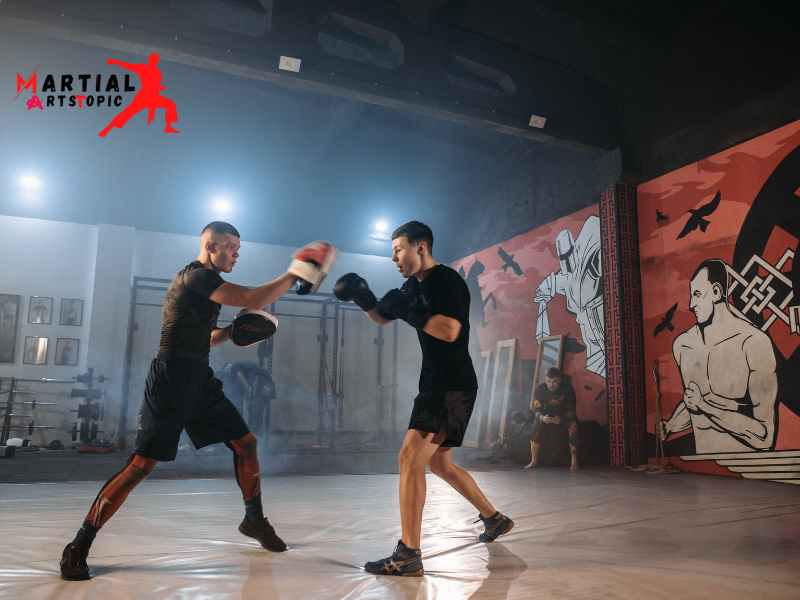
MMA is not just about throwing punches and kicks; it requires a comprehensive understanding of various martial arts disciplines. By training in MMA, you will gain a well-rounded skill set that covers striking, grappling, and submission techniques. This versatility will make you a formidable opponent in any situation, whether you’re standing or on the ground.
MMA training offers a multitude of physical and mental benefits. It is an intense full-body workout that improves cardiovascular endurance, strength, agility, and flexibility. Regular training sessions will help you shed unwanted pounds, build lean muscle, and increase your overall fitness level. The discipline and mental toughness developed through MMA training will carry over into all aspects of your life, making you more focused and resilient.
What to Expect from Our MMA Training Program
They designed our MMA training program to cater to individuals of all skill levels, from beginners to advanced fighters. We start by assessing your current abilities and goals and then tailor a training plan that suits your individual needs. Our classes cover all aspects of MMA, including striking techniques, clinch work, takedowns, ground control, and submissions.
During your training sessions, you will learn how to execute crisp punches, powerful kicks, and devastating knee and elbow strikes. You will also master the art of takedowns and develop the ability to control and dominate your opponent on the ground. Our experienced trainers will teach you various submission techniques, ensuring that you have the tools to finish fights efficiently and effectively.
Besides technical training, our MMA program includes strength and conditioning exercises specifically designed to enhance your performance in the cage. These workouts focus on building functional strength, explosive power, and cardiovascular endurance, all essential for lasting success in MMA.
Train with the Best, Be the Best
If you’re serious about MMA, then it’s imperative to train with the best. At [Your MMA Training Center], our trainers have competed at the highest levels of MMA and have the expertise to take your skills to new heights. Our supportive and inclusive training environment will push you to your limits while ensuring your safety and well-being.
So, what are you waiting for? Step into the cage and unlock your true potential with our MMA training program. Whether you’re dreaming of becoming a professional fighter or simply want to improve your self-defense skills, we have the training and guidance you need to succeed. Join us at [Your MMA Training Center] and let’s start your journey towards becoming a skilled and confident MMA martial artist today!
Strategy and Tactics in MMA
Strategy and Tactics in MMA: Mastering the Art of Combat MMA, short for Mixed Martial Arts, has become one of the most popular combat sports in the world. It combines various fighting styles, including striking and grappling techniques, creating a dynamic and thrilling display of skill and athleticism. In order to succeed in this intense sport, fighters must not only possess physical strength and agility but also a strategic mindset that allows them to outsmart their opponents. In this blog post, we will delve into the world of strategy and tactics in MMA, exploring the key elements that make a fighter successful in the cage.
Understanding the Basics of MMA Strategy
Strategy in MMA involves developing a game plan that maximizes a fighter’s strengths while exploiting the weaknesses of their opponent. It requires a comprehensive understanding of different martial arts disciplines, as well as the ability to adapt and react quickly in the heat of the moment. A well-rounded fighter should be proficient in striking, wrestling, and submissions, allowing them to dictate the course of the fight and control the outcome.
Striking Strategies in MMA
Striking is a fundamental aspect of MMA, and fighters who excel in this area often have a significant advantage over their opponents. Effective striking strategies involve a combination of footwork, timing, and accuracy. Fighters must be able to create angles, use feints to deceive their opponents, and capitalize on openings to deliver powerful strikes. It’s also crucial to have a varied arsenal of strikes, including punches, kicks, elbows, and knees, to keep opponents guessing and prevent them from establishing a rhythm.
Grappling Strategies in MMA
Grappling is another vital component of MMA, as it allows fighters to control their opponents on the ground and potentially secure a submission victory. A strong grappling strategy involves a combination of takedowns, ground control, and submission techniques. Wrestlers excel in taking their opponents down and controlling them on the ground, while Brazilian Jiu-Jitsu practitioners have a wide range of submission holds in their arsenal. A successful grappler must be able to seamlessly transition between different positions and submissions, always staying one step ahead of their opponent.
Strategic Approaches to MMA
While individual techniques are essential in MMA, it is the overall strategic approach that ultimately determines a fighter’s success. Here are a few common strategic approaches seen in the sport:
- The Counter Striker: This fighter prefers to wait for their opponent to make a move before launching a counterattack. They use their defensive skills to evade strikes and then exploit their opponent’s mistakes by delivering calculated and powerful counters.
- The Pressure Fighter: This fighter aggressively pushes forward, constantly putting pressure on their opponent. They use a combination of strikes and takedowns to wear down their opponent’s defenses and force them into making mistakes.
- The Opportunist: This fighter capitalizes on any opportunity that presents itself. Whether it’s a momentary lapse in their opponent’s defense or an opening for a submission, they are always ready to seize the moment and finish the fight.
- The Game Changer: This fighter relies on their ability to surprise their opponent with unexpected techniques or strategies. They study their opponent’s weaknesses and look for unconventional ways to exploit them, catching their opponents off guard and securing victory.
Developing Your MMA Strategy
Developing a successful strategy in MMA requires a combination of technical proficiency and mental fortitude. It’s important to train in a variety of disciplines, as well as study and analyze the strategies of successful fighters. By understanding your strengths and weaknesses, as well as those of your opponent, you can create a game plan that maximizes your chances of victory.
So, whether you are an aspiring MMA fighter or a passionate fan, understanding the intricacies of strategy and tactics in MMA will undoubtedly enhance your appreciation of this electrifying sport. Stay tuned for more insights into the world of MMA martial arts!
MMA Fighting Techniques
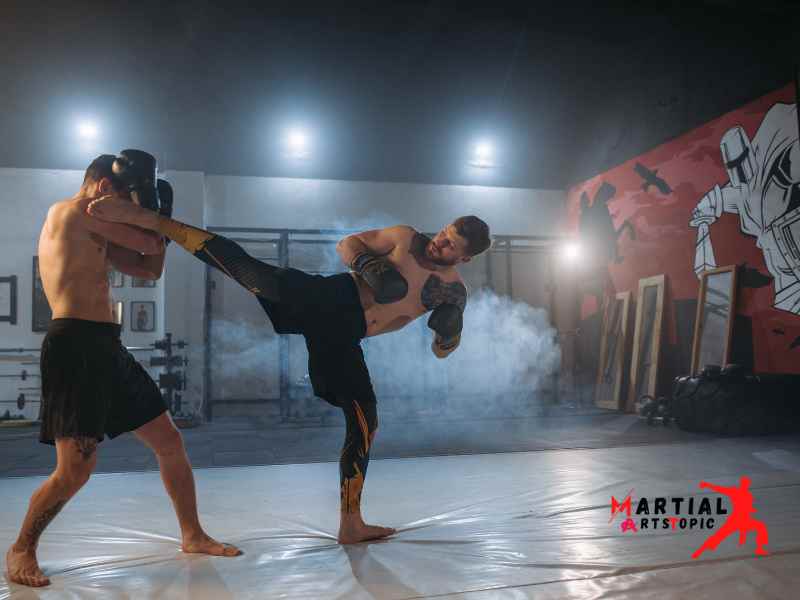
MMA Fighting Techniques: Master the Art of MMA Martial Arts. Are you ready to enter the highly competitive world of mixed martial arts (MMA)? If so, it’s crucial to familiarize yourself with the various MMA fighting techniques. These techniques are the backbone of MMA martial arts and will give you a significant advantage over your opponents. In this blog post, we will explore some of the most effective and popular techniques used in MMA.
Striking Techniques
Striking is a fundamental aspect of MMA fighting. It involves using punches, kicks, knees, and elbows to attack your opponent. The key to effective striking is mastering the technique, timing, and accuracy. Some of the essential striking techniques include:
- Boxing: Boxing techniques teach you how to throw quick and powerful punches. Learning proper footwork and head movement is crucial in avoiding strikes from your opponent.
- Muay Thai: This martial art from Thailand emphasizes the use of elbows, knees, and clinching techniques. Muay Thai will help you develop devastating strikes and improve your overall conditioning.
- Kickboxing: Kickboxing combines elements of boxing and martial arts kicks. It provides a versatile arsenal of strikes and teaches you how to generate power from your entire body.
Grappling Techniques
Grappling is another essential component of MMA. It involves controlling your opponent through holds, locks, and submission techniques. Proper grappling techniques allow you to take the fight to the ground and gain a helpful position. Some of the essential grappling techniques include:
- Brazilian Jiu-Jitsu (BJJ): BJJ focuses on ground fighting and submission holds. By learning BJJ, you’ll gain the ability to submit your opponent using joint locks and chokes.
- Wrestling: Wrestling techniques are vital for takedowns, maintaining top control, and escaping from the bottom position. We know wrestlers for their incredible strength, explosiveness, and ability to control their opponents.
- Judo: Judo emphasizes throws and trips to take your opponent down. It teaches you how to use your opponent’s momentum against them and gain control of the ground.
Defensive Techniques
Besides offensive techniques, it’s vital to develop strong defensive skills to protect yourself in MMA fights. Effective defensive techniques include:
- Blocking: Properly blocking strikes can minimize the damage inflicted by your opponent. It’s crucial to learn different blocking techniques for punches, kicks, and elbows.
- Footwork: Good footwork allows you to move quickly and avoid being an easy target. It also helps you create angles to attack your opponent effectively.
- Clinching: Clinching allows you to control your opponent’s movement and neutralize their strikes. It can set up takedowns or deliver devastating strikes from close range.
Mastering the various MMA fighting techniques takes time, discipline, and dedication. It’s crucial to train with experienced coaches and practitioners to develop a well-rounded skill set. Remember, consistency and practice are key to becoming proficient in MMA martial arts.
Benefits of Practicing MMA Martial Arts
Mixed Martial Arts (MMA) is a combat sport that combines various fighting styles. As an intense and physically demanding discipline, MMA has gained immense popularity worldwide. Apart from being an exciting spectator sport, practicing MMA martial arts offers a multitude of benefits for individuals of all ages and fitness levels. In this blog post, we will explore the numerous advantages of embracing MMA as a form of physical training and personal development.
Full-Body Workout
Engaging in MMA martial arts provides a comprehensive full-body workout like no other. The diverse techniques and movements incorporated in MMA training, such as striking, grappling, and ground fighting, work out every muscle group in your body. By practicing MMA, you can improve your strength, endurance, flexibility, and overall cardiovascular fitness.
Self-Defense Skills
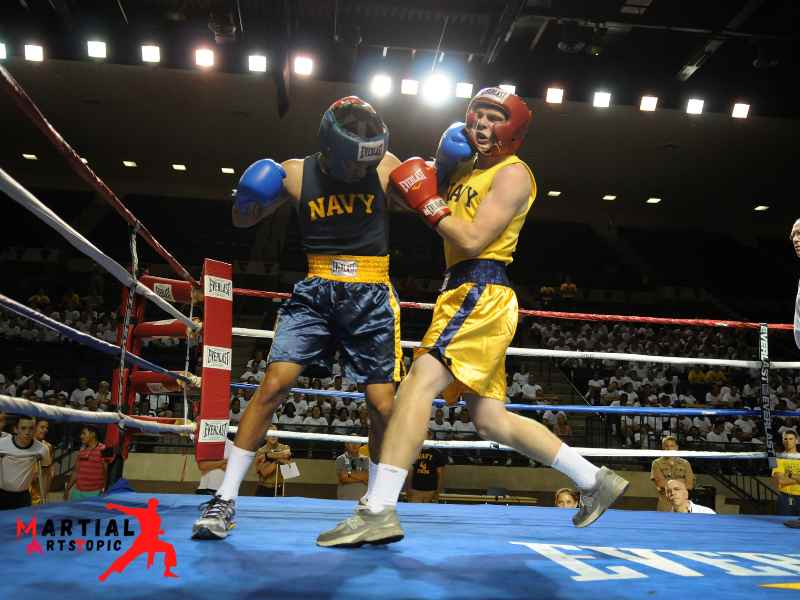
One of the most valuable benefits of learning MMA martial arts is gaining self-defense skills. MMA training equips individuals with a range of techniques to effectively defend themselves in real-life situations. Whether it’s learning how to strike, evade, or restrain an opponent, the self-defense skills gained through MMA can enhance personal safety and boost self-confidence.
Mental Discipline and Focus
MMA martial arts require an extraordinary level of mental discipline and focus. Training sessions demand concentration, quick decision-making, and the ability to adapt to rapidly changing situations. As practitioners continually challenge themselves both physically and mentally, they develop mental toughness, resilience, and enhanced focus that can apply to various aspects of life.
Stress Relief and Emotional Well-being
Engaging in MMA martial arts provides an excellent outlet for stress relief. The physical intensity of training allows individuals to release pent-up emotions and frustrations, promoting a sense of emotional well-being. The endorphins released during exercise can help ease symptoms of anxiety and depression, leading to improved mental health.
Improved Confidence and Self-Esteem
MMA training promotes personal growth and self-improvement, leading to increased confidence and self-esteem. As individuals progress in their training, mastering new techniques and overcoming physical challenges, they develop a sense of accomplishment and belief in their abilities. This newfound confidence extends beyond the training mat and positively impacts various aspects of life.
Weight Management and Body Composition
Regularly practicing MMA martial arts can aid in weight management and body composition goals. The high-intensity nature of MMA training burns a significant number of calories, helping individuals achieve and maintain a healthy weight. The combination of cardio and strength training in MMA enhances muscle tone, resulting in a leaner and more sculpted physique.
Increased Coordination and Agility
MMA martial arts involve intricate movements and techniques that require excellent coordination and agility. Through consistent practice, individuals can improve their hand-eye coordination, footwork, balance, and overall motor skills. These enhanced physical attributes can have a positive impact on daily activities and other sports or physical endeavors.
Different Fighting Styles in MMA
Different Fighting Styles in MMA: Exploring the World of MMA Martial Arts Mixed Martial Arts (MMA) has rapidly gained popularity as one of the most thrilling combat sports in the world. MMA combines various fighting techniques from different martial arts disciplines, resulting in intense and action-packed fights. In this blog post, we will delve into the different fighting styles commonly seen in MMA, highlighting the diversity and skill required to excel in this sport.
Brazilian Jiu-Jitsu (BJJ)
Originating from Brazil, BJJ focuses on ground fighting and submission holds. Practitioners aim to take the fight to the mat, where they can use their superior grappling skills, joint locks, and chokeholds to force their opponent into submission. BJJ is an essential skill for any MMA fighter, as it provides a solid foundation for defense and control.
Muay Thai
Known as the “Art of Eight Limbs,” Muay Thai is a striking-based martial art that originated in Thailand. It emphasizes the use of fists, elbows, knees, and shins to deliver devastating blows to the opponent. We know Muay Thai fighters for their powerful strikes, clinching techniques, and impeccable timing. The ability to strike effectively and generate power is crucial in MMA, making Muay Thai an indispensable skill.
Wrestling
Wrestling has a long history in combat sports and has become a fundamental part of MMA. Wrestlers focus on takedowns, throws, and controlling their opponents on the ground. Their excellent grappling and takedown skills enable them to dictate the fight’s pace and neutralize their opponents’ striking abilities. Wrestlers often have a significant advantage in maintaining top control and avoiding submissions.
Boxing
Boxing is a classic combat sport that has found its place in MMA. Boxers excel in punching techniques, footwork, and head movement, allowing them to deliver precise and powerful strikes. While boxing lacks the ground-fighting aspects of MMA, the ability to strike effectively and avoid strikes is invaluable in the octagon.
Kickboxing
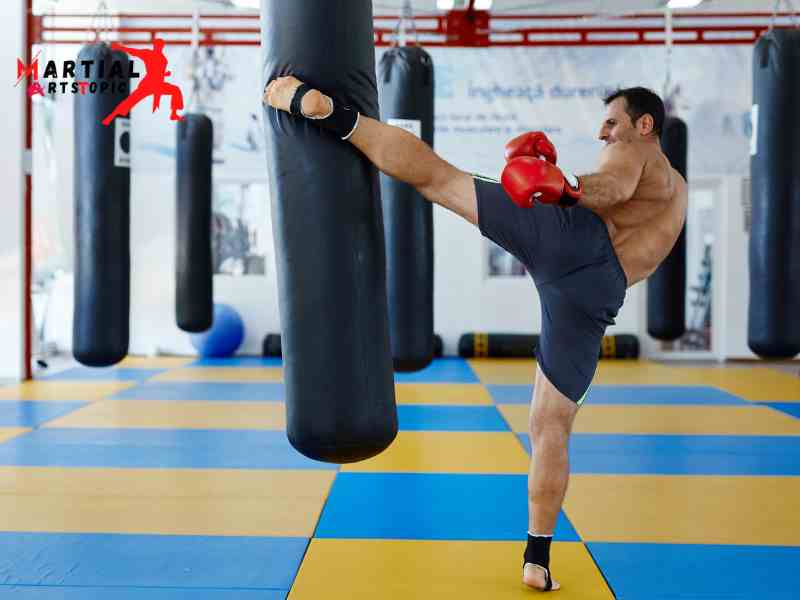
Kickboxing combines elements of boxing and traditional martial arts, emphasizing both punches and kicks. Kickboxers are skilled at using their legs to deliver powerful strikes, adding versatility to their arsenal. They possess excellent footwork and dexterity, allowing them to maintain distance and strike from various angles.
Karate
Karate is a traditional martial art that teaches practitioners to strike with speed and precision. Karate fighters focus on strong linear strikes and effective counterattacks. While Karate has developed significantly in MMA, its emphasis on discipline, focus, and speed make it a valuable fighting style.
Taekwondo
Originating in Korea, they know Taekwondo for its high, fast kicks and jumping/spinning kicks. Taekwondo fighters are experts at maintaining distance and using their legs effectively. Their dynamic kicking techniques often catch opponents by surprise and can be devastating if executed correctly.
Judo
Judo focuses on throws and takedowns, making it an essential fighting style for MMA. Judokas excel at using leverage and balance to control and subdue their opponents. Their ability to quickly transition from striking to grappling, and vice versa, gives them a competitive edge.
The Evolution of MMA Martial Arts: From Ancient Techniques to Modern Combat
The Evolution of MMA Martial Arts: From Ancient Techniques to Modern Combat MMA martial arts, short for Mixed Martial Arts, is a combat sport that has gained tremendous popularity in recent years. It is a combination of various martial arts disciplines, allowing fighters to use a wide range of techniques to defeat their opponents. But have you ever wondered how MMA martial arts came to be? In this blog post, we will take a journey through time and explore the evolution of MMA martial arts, from its ancient roots to the modern-day combat sport we know today.
Ancient Origins: The Birth of Martial Arts
Martial arts have been around for centuries, with various forms of combat techniques being developed in different cultures around the world. Ancient civilizations such as the Greeks, Romans, and Chinese all had their own unique fighting styles. They primarily used these early martial arts for self-defense and military combat.
Traditional Martial Arts: The Building Blocks
As time passed, martial arts began to develop and become more refined. Various styles and disciplines emerged, each with its own set of techniques and principles. These traditional martial arts, such as Karate, Judo, Taekwondo, Muay Thai, and Brazilian Jiu-Jitsu, laid the foundation for what would eventually become MMA martial arts.
The Birth of Vale Tudo and No-Holds-Barred Combat
In the early 20th century, combat known as Vale Tudo, meaning “anything goes” in Portuguese, emerged in Brazil. Vale Tudo matches allowed fighters to use a combination of striking and grappling techniques, with very few rules or restrictions. This raw and unfiltered style of combat was a precursor to modern-day MMA and laid the groundwork for the development of the sport.
The Rise of UFC and the Birth of MMA
In 1993, the Ultimate Fighting Championship (UFC) was founded, marking the birth of MMA as a regulated and organized combat sport. A clash of different martial arts styles, as fighters from various disciplines competed against each other to determine the most effective fighting techniques characterized the early years of the UFC. This period saw the emergence of legendary fighters such as Royce Gracie, Ken Shamrock, and Randy Couture, who showcased the effectiveness of Brazilian Jiu-Jitsu, wrestling, and other martial arts in the octagon.
The Evolution of Rules and Regulations
As MMA gained popularity, there was a need for standardized rules and regulations to ensure the safety of the fighters. Athletic commissions were established, and organizations like Pride Fighting Championships and Strikeforce emerged, further contributing to the growth of the sport. These organizations implemented weight classes, time limits, and other rules to make the fights more structured and safer for the athletes.
Modern MMA: A Complete Combat System
Today, MMA martial arts have evolved into a complete combat system, incorporating techniques from various martial arts disciplines. They trained fighters in striking (boxing, kickboxing, Muay Thai), grappling (Brazilian Jiu-Jitsu, wrestling), and submission holds, making them well-rounded athletes capable of adapting to any situation in the cage. Prominent MMA organizations such as the UFC and Bellator MMA showcase the skills of these fighters, captivating audiences around the world.
The Future of MMA Martial Arts
As MMA continues to evolve, we can expect to see further advancements in training methods, techniques, and strategies. The sport is constantly evolving, with fighters pushing the boundaries of what is possible in the cage. With the rise of new technologies and training methods, MMA martial arts is sure to continue captivating audiences and producing world-class athletes.
So, whether you’re a fan of the sport or an aspiring fighter, take a moment to appreciate the evolution of MMA martial arts and the incredible athletes who have shaped the sport into what it is today.
